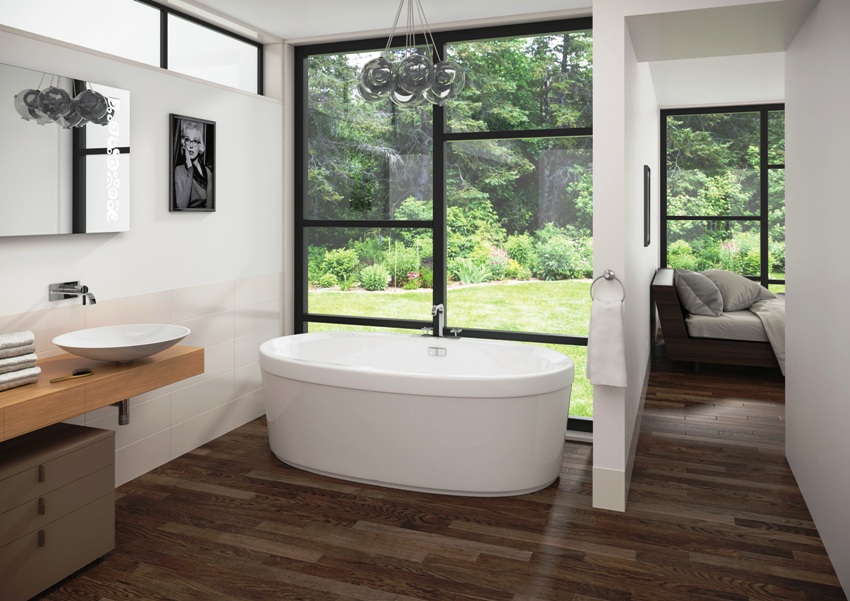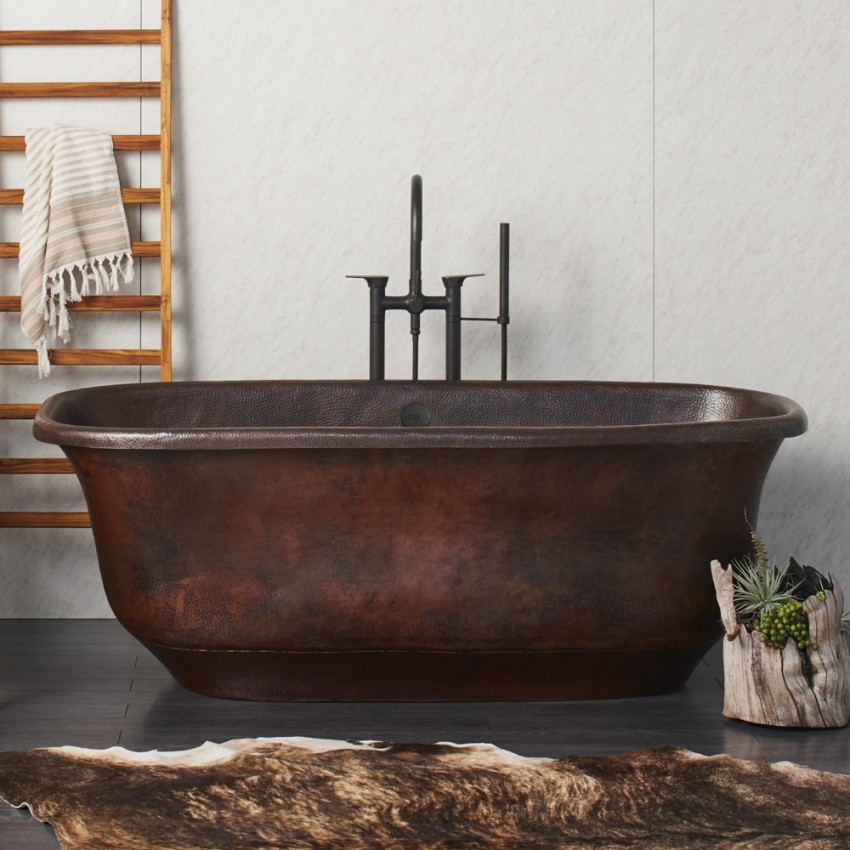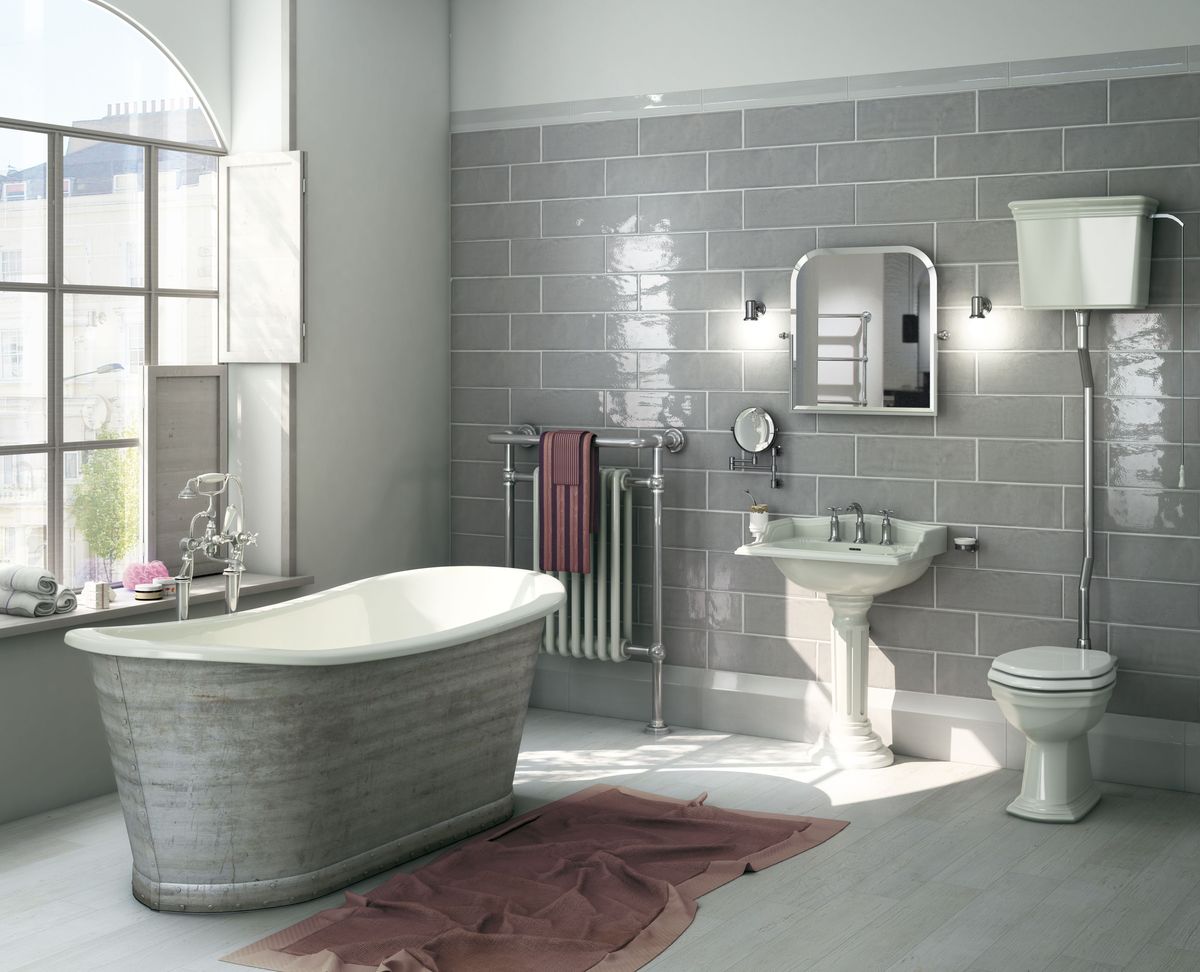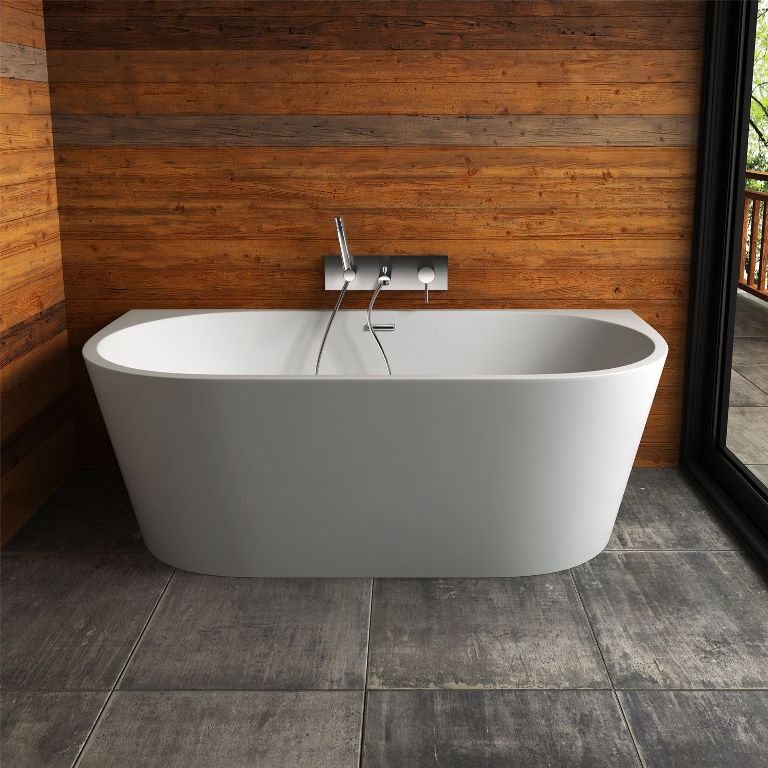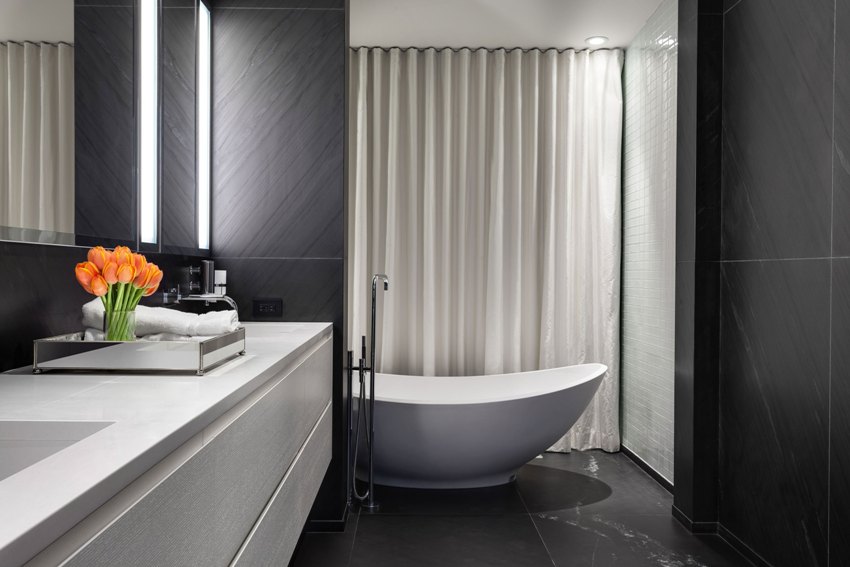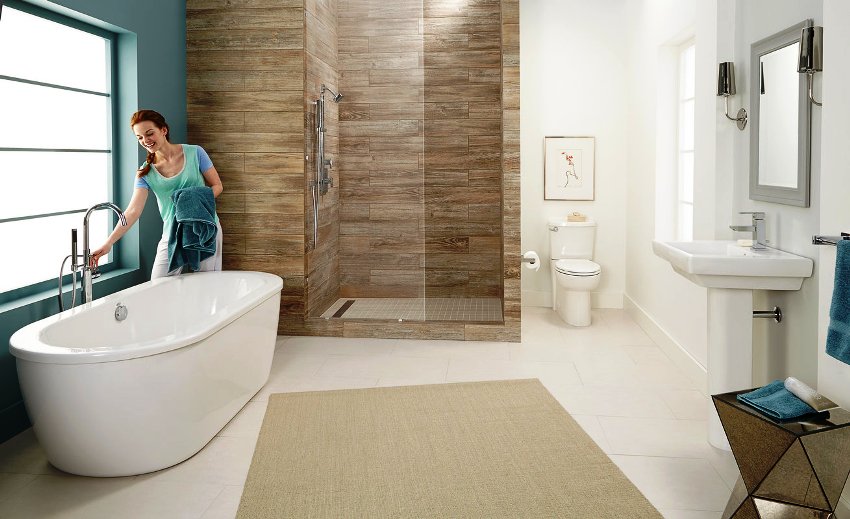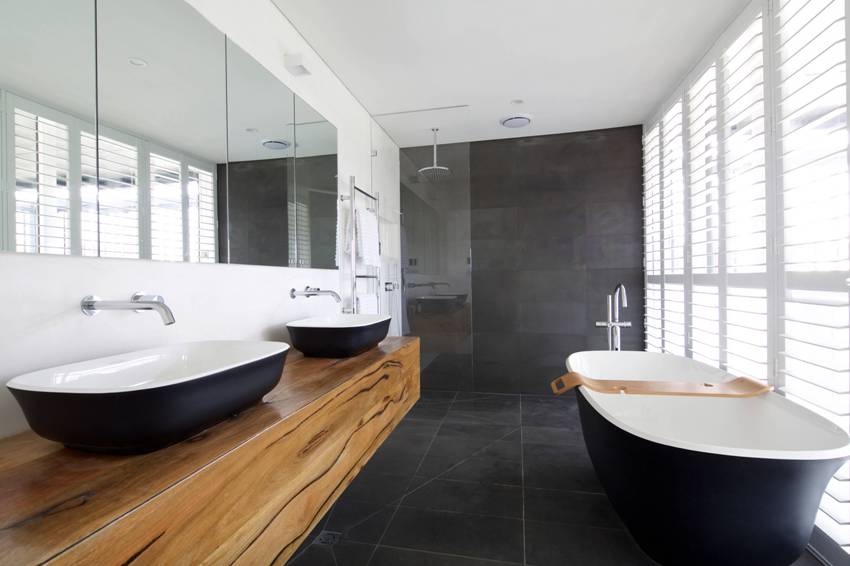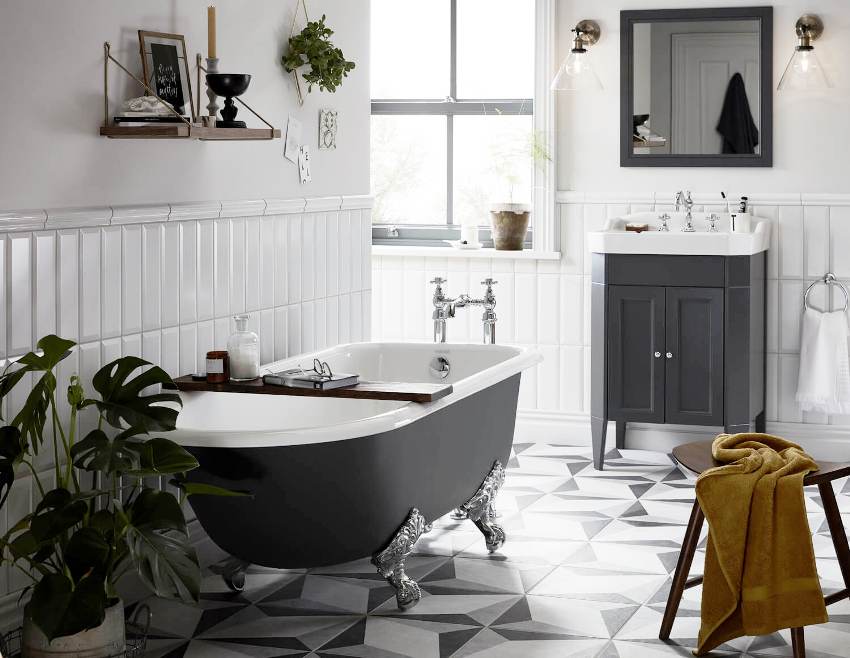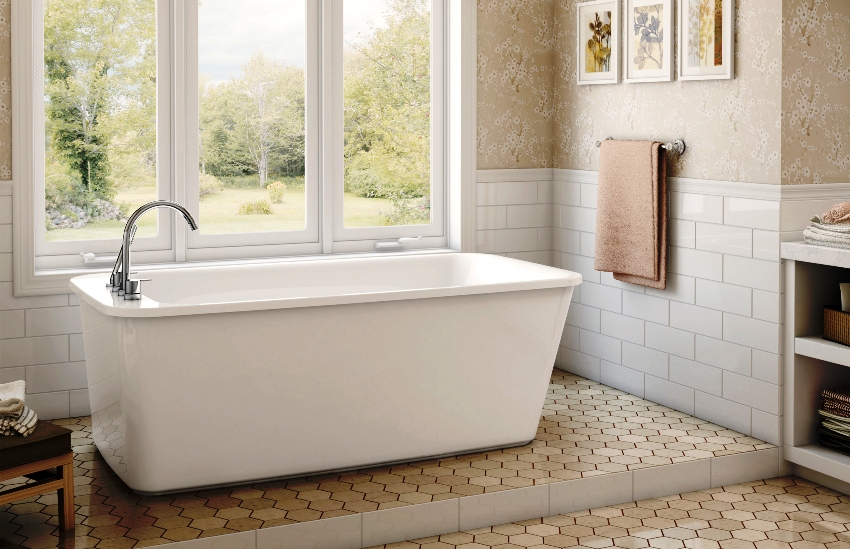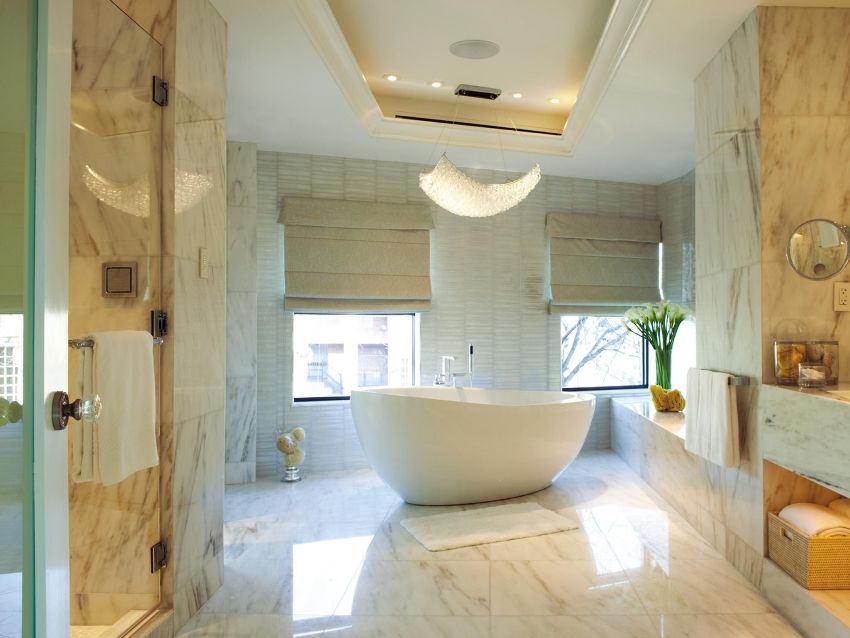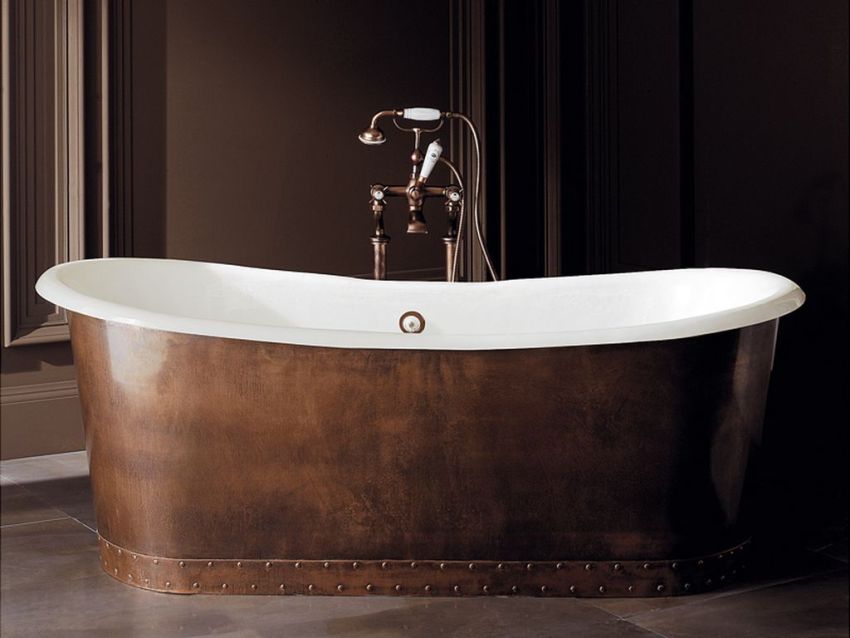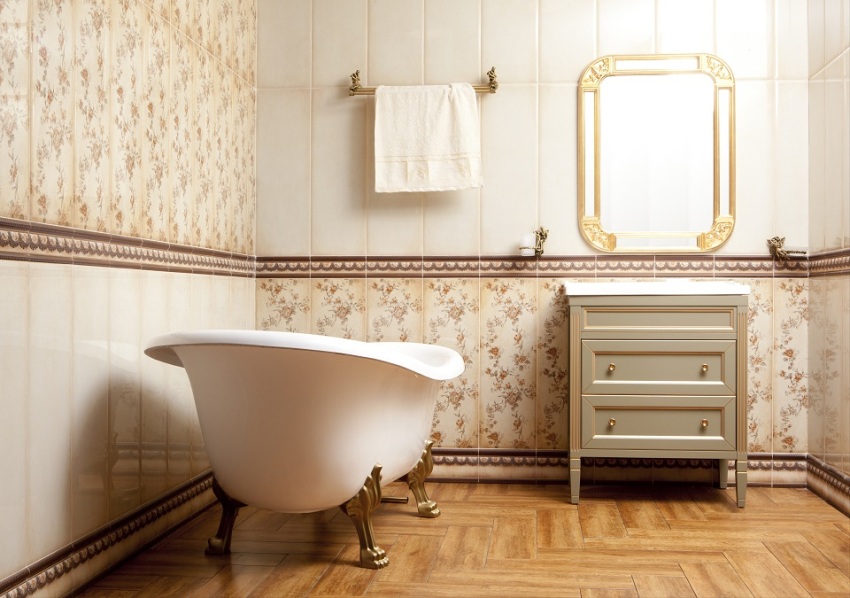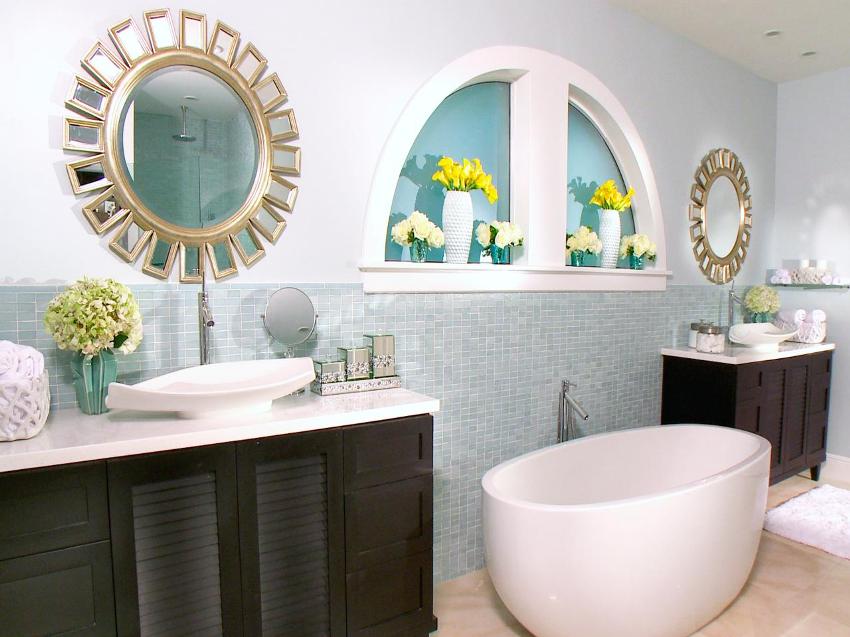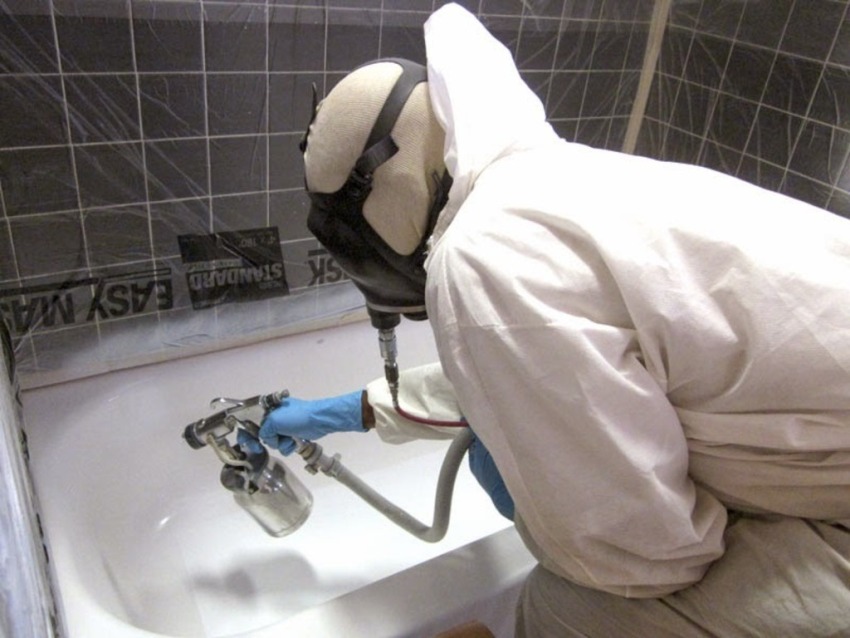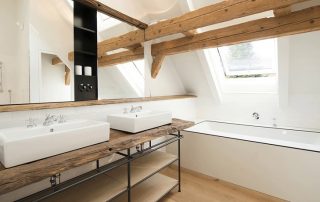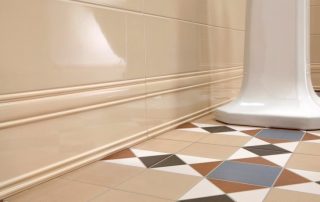More recently, cast iron baths were the only option for installation in a bathroom. Even now, when a variety of acrylic and steel models are presented in retail outlets, cast iron products are still in demand. This is due to the fact that cast iron is considered a reliable and durable material. When choosing plumbing, one should take into account not only the dimensions, but also how much a cast-iron bathtub weighs, since the weight of some models exceeds 100 kg.
Content [Hide]
- 1 Why do some people prefer to install a cast iron bath in the bathroom
- 2 Other advantages and main disadvantages of installing a cast iron bath in a bathroom
- 3 Which bath is better: cast iron, or acrylic, or steel
- 4 What is meant by standard bath sizes
- 5 What is the difference between domestic cast-iron bathtubs and imported sanitary ware
- 5.1 The weight of modern and old cast-iron bathtubs is 150x70 cm and smaller items
- 5.2 What will be the weight of a cast-iron bathtub 170x70 cm, depending on the manufacturer
- 5.3 How much can a large cast-iron bathtub 180x80 cm and longer models weigh
- 5.4 Overview of the main models of cast-iron bathtubs 170x75 cm and products of other sizes made in Russia
- 6 How much does a cast-iron bathtub of a European manufacturer weigh
- 7 How is the restoration of a cast-iron bathtub carried out, what is required for this
Why do some people prefer to install a cast iron bath in the bathroom
Cast iron baths have gained popularity due to a significant margin of safety, which will be the envy of all modern sanitary ware models. Due to the peculiarities of the material used for manufacturing, the bath bowl is resistant to any kind of mechanical damage and is suitable for people with heavy weight. However, in this case, it is necessary to take into account the strength of the floors that can withstand the weight of the cast-iron bath, to which the volume of water and the mass of a person are added.
Cast iron baths received a large margin of safety due to the composition of the material, the basis of which is cast iron - an iron-carbon alloy with a carbon content of at least 2.14%. It should be noted that the average melting point of cast iron is 1200 ° C, which is 300 ° C less than that of steel. This is due to the fact that cast iron contains a greater amount of carbon, presented in the form of elements such as graphite or cementite.
Interesting information! Pig iron belongs to the materials supplied by ferrous metallurgy plants. Its basis, like steel, is iron ore, but only steel contains less carbon, has a light silver hue and is less weight than cast iron.
If you ask yourself which bath is better: steel or cast iron, then you may not get a definite answer, because each of the options has its own advantages and disadvantages.So, a steel bathtub is characterized by a significantly lower weight, but cast iron plumbing is able to maintain the temperature of the water longer. Even an old cast-iron bathtub will look attractive without much restoration, the main thing is to wash it well and restore the enamel coating. Most modern manufacturers give warranties for products for more than 30 years, but, according to reviews, cast iron baths last much longer than the stated period.
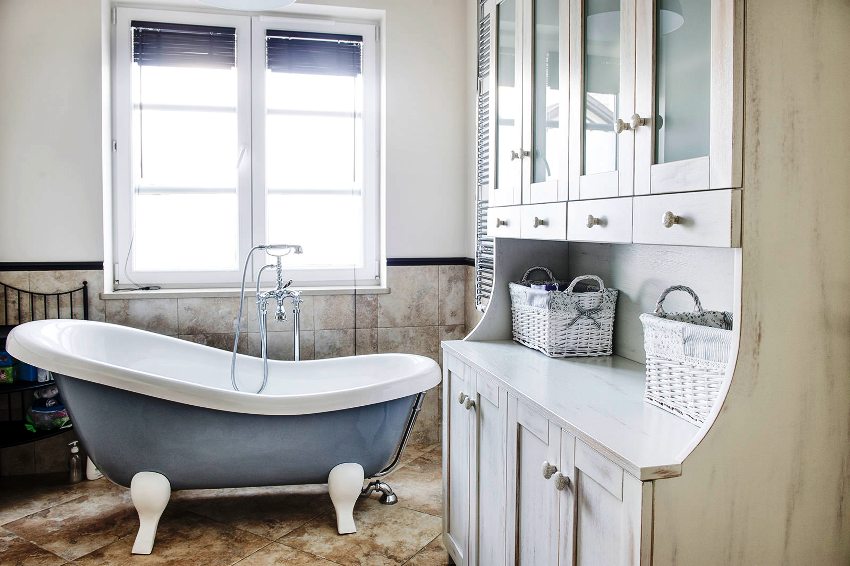
The enamel of cast iron baths is of high quality, which allows it to withstand exposure to high temperatures and household chemicals
Other advantages and main disadvantages of installing a cast iron bath in a bathroom
Despite how much a cast iron bathtub weighs, it is still popular among consumers, because its large weight and manufacturing characteristics contribute to an increase in the number of advantages. So, due to the large weight, the cast iron bath bowl has an increased resistance to loads and vibrations arising from the use of hydromassage equipment.
Thick walls allow keeping the temperature of the water inside the tank for a long time, which makes it possible to relax longer while taking a bath. The enamel coating is not only smooth and pleasant to the touch, but also easy to clean: the bathtub can be easily cleaned with aggressive chemicals and a hard sponge. Other advantages of installing a cast iron bathtub in the bathroom:
- long service life. Modern manufacturers give a 20-30 year warranty, but in practice, many have been using bathtubs for generations, and even after 50 years, with proper care, they do not lose their characteristics;
- good insulation. Due to the large wall thickness, the noise of falling water is not as loud as in an acrylic or steel bowl;
- significant stability. A cast-iron bath itself has a lot of weight, and if you add a volume of filled water to it, then the total weight will increase by 100-200 kg. If installed correctly, it will not work to turn or overturn the bowl;
- the ability to hold a lot of weight. The bathroom can be used by people with a large body weight, however, it is necessary, as already noted, to take into account the peculiarities of the floors;
- easy cleaning. The thin layer of enamel that covers the bowl is able to clean itself and repel dirt. You can wash the bottom and walls by any means;
- low cost. The standard price of a cast-iron bathtub 170 cm from a domestic manufacturer is within 20 thousand rubles, foreign models cost from 30 thousand rubles.
The main disadvantages that distinguish cast iron baths 150×70 cm and products of other sizes
Despite the large number of advantages, some disadvantages of the cast iron bath should be noted, the main of which is the large weight of the product. Therefore, in most cases, you have to pay separately not only for the installation, but also for the removal of the cast-iron bath from the trading platform. Also, the negative aspects of using the product include:
- small selection of shapes. The peculiarities of cast iron do not allow pouring bowls of complex shapes, therefore, mainly there are only a few model options;
- the need to warm up. Low heat conductivity plays both a positive and a negative role. Therefore, water should be poured at a higher temperature than required: this is due to the fact that part of the heat will go to warm up the walls;
- the need for the presence of reliable floors. A cast iron bathtub is not recommended for installation on the second floor of a small private house with wooden beams, because they may not withstand the load;
- fragility. Despite the fact that cast iron has good strength characteristics, the enamel surface can be easily damaged by a pinpoint impact, for example, if a glass cup or any metal object is dropped inside.
Interesting information! Despite the fact that most of the models have an average price, you can also find exclusive options that differ in vintage designs, forged legs and other decorations. The price of such baths sometimes reaches values of 150 thousand or even 300 thousand rubles.
Which bath is better: cast iron, or acrylic, or steel
Acrylic bathtubs have recently replaced steel and cast iron. Despite the fact that acrylic to the touch resembles plastic, but according to its characteristics, it is durable. Due to its plasticity, baths of almost any shape can be made from heated acrylic, and after cooling, the finished product is reinforced and stiffened.
The main advantage of steel structures is low cost, but this does not mean that they are much worse than cast iron or acrylic baths. A steel product, just like a cast iron product, is covered with enamel after manufacturing, which, during drying at high temperatures, penetrates into the micropores of the base. This makes the enamelled steel resistant to acids and abrasion. Steel baths, like cast iron products, are considered wear-resistant and shock-resistant.
Cast iron baths, thanks to the enamel layer, look attractive, and the strength of the material guarantees the preservation of the shape of the bath under any, even the highest, loads. Therefore, if you are wondering which bathtub is better: acrylic, cast iron or steel, it is worth considering that each product has its own positive and negative features.
So, a steel bowl has a lower weight, but cast iron retains heat better. Acrylic is elastic and can even withstand punctual impacts, and cast iron is damaged in this case.
Acrylic baths do not have the same long-term warranty as cast iron baths. The table provides information on the advantages and disadvantages of different options, to make it easier to understand the question of which bath is better: cast iron, acrylic or steel.
| Bath type | Positive characteristics | Negative characteristics |
| Acrylic | large selection of models; little weight; retains heat well. |
There are difficulties in care, you cannot use an abrasive for cleaning.
Due to plasticity, it can spring underfoot. It is necessary to buy complete with a protective panel or make a decorative finish |
| Cast iron | looks prestigious and expensive;
reliable; has telescopic legs. |
If a chip occurs in one place that violates the integrity of the product, this defect is difficult to correct.
Difficult installation due to impressive weight |
| Steel | lightweight;
inexpensive; stable. |
It retains heat poorly due to the peculiarities of thermal conductivity.
Not very stable, it will vibrate when additional equipment is connected. Bathtub filling is quite noisy |
Helpful information! Based on the characteristics of lower weight and practicality, then acrylic bathtubs are considered a good option. However, the strength of cast iron makes it possible to use the product for a significant period of time. A steel tub is the cheapest, but scratches will be difficult to remove.
What is meant by standard bath sizes
The weight of the product is primarily influenced by such dimensions of the bath as the size and volume of the bowl. In accordance with this, small cast-iron bowls are distinguished, the size of which is 120x70 cm. Such products are considered optimal for bathrooms with a limited area. A corner cast-iron bathtub fits especially well into a small room, after the installation of which there is a lot of free space. The standard weight of small models rarely exceeds 87 kg, and a bowl volume of 150 liters will be enough for comfortable use.
The generally accepted standard size of a cast-iron bathtub is considered to be 150 cm long, although sometimes a length of 160 cm is found, the width often remains unchanged and equals 70 cm.Despite the fact that filling such a bathtub will take more water, it will be comfortable for any average person to be in a semi-recumbent position growth. You can install a bath with a length of 150-160 cm in most bathrooms. The maximum weight of sanitary ware with such parameters reaches 120 kg, and the average weight is within 105 kg. To fill the bathtub, you will need to use 160-185 liters of water.
Cast-iron baths are considered large, the size of which is 170 × 70 cm and more:
- 170×75;
- 180×85;
- 200×8.
Large bathtubs can weigh up to 120-150 and even 300 kg, without taking into account the additional weight of legs, faucets or other accessories. As a standard, the bath is designed to fill 0.15 m³ of water, which equals 150 liters, in large items the volume reaches 200-280 liters. The increase in capacity is influenced not only by the length of the bath, but also by its depth. Often rectangular structures are distinguished by the smallest mass, but free-standing or corner options weigh a little more.
What is the difference between domestic cast-iron bathtubs and imported sanitary ware
Studying the characteristics of domestic and foreign cast-iron bathtubs, one can pay attention to the fact that imported sanitary ware has an average weight of 15-30 kg less than Russian-made models, although they have the same length and width parameters. The thing is that many countries are used to saving on water consumption, which is associated with a reduced depth of products. For a bath of a foreign manufacturer, the depth from the bottom to the drain hole rarely exceeds 35 cm, and in domestic models this indicator is most often in the range of 45-60 cm.
Helpful information! Another reason why imported cast-iron baths are lighter is the small wall thickness, which is 2-3 cm less compared to the same indicator for Russian products.
It should be noted here that the walls of modern Russian baths are smaller than those of old Soviet bowls, but still this figure cannot be compared with European or Chinese models, where the wall thickness does not exceed 5 mm. Nevertheless, even modern baths of domestic manufacturers are lighter than their Soviet counterparts. So, plumbing, measuring 150 x 70 cm, now reaches 105 kg (in Soviet times - 120 kg). A European model of the same size, made by the Italian manufacturer Roca, weighs 73 kg.
In shopping centers, there are lightweight models of cast-iron bathtubs, the weight of which is reduced by 10-50 kg due to the thinnest possible walls. This leads to a negative point - a reduction in the warranty period from 30 to 10-15 years.
Related article:
Freestanding bathtub: a touch of luxury and chic in the bathroom design
A variety of materials, designs and shapes. Installation rules, selection of accessories, design ideas.
The weight of modern and old cast-iron bathtubs is 150x70 cm and smaller items
As already noted, cast iron baths are divided into types according to dimensions. Cast iron baths of 150 cm (and less) are considered small options, which are also called "sit-down". Small bathtub sizes also include such lengths as 120, 130 and 140 centimeters, while the width of these products, as a rule, is standard and is 70 cm.It will be problematic for a person of average height to lie down in the bathroom, but such products are great for small bathrooms and for families with small children, who are conveniently bathed in a small bowl.
Using a small bath not only helps to save space, but also makes it possible to reduce water consumption, because it takes no more than 80-120 liters of water to fill such a bowl. The approximate weight of a bathtub up to 140 cm long will be about 70-80 kg, and if you choose a foreign-made model, then the weight will be 8-12 kg less.
Bathtubs of 150 cm are considered more comfortable, although they are also classified as sit-down or small. Their width rarely exceeds 70 cm, but in the case of corner options, this value will be greater. Model weights range from 90 to 100 kg. It should be noted that it was this size that was considered the most optimal for installation in an old Soviet apartment, which is characterized by a small combined bathroom.
A cast iron bath 160 x 70 cm is considered medium in size, its weight can exceed 100 kg. A person of average height will comfortably sit in a bowl of this size. These dimensions of baths, which are not always available in retail outlets, are considered less common.
Interesting information! The weight of an old Soviet bathtub 150 cm long, according to GOST, should not have exceeded 94 kg. Modern models of Russian factories differ in approximately the same mass. As for foreign products, over the past 20 years, their weight has decreased by 20-35 kg due to a decrease in wall thickness from 8-10 mm to 5 mm. In Chinese models, they also save on the enamel layer, but this impairs the consumer ability of the products.
What will be the weight of a cast-iron bathtub 170x70 cm, depending on the manufacturer
During the Soviet era, baths, like many other products, were manufactured in compliance with the standards issued by the state service of standards. For these reasons, the stores did not have a large selection of bath sizes, and the mandatory wall thickness, which should exceed 1 cm, was the reason for the large weight of the products. In Soviet times, the following were considered the main modifications of bathtubs:
- enameled cast iron bathtub - "VCh";
- cast iron enameled modernized model - "VChM";
- a modernized lightweight bathtub ("VCHMO"), which was slightly lighter than other variants of the same size;
- baths with a type-setting mixer, which came immediately in the set ("VChM1");
- a modernized lightweight version with a type-setting mixer - "VCHMO1".
Baths were generally 150x70 or 170x70 cm in size. The rarest and most expensive model was 180 cm long. Of course, the weight of a cast-iron bath 170x70 cm was more than the weight of short products. So, modernized models and versions with a mixer weighed about 118-120 kg. The maximum deviation from the norm should not exceed 5 kg. It should be noted that the modernized lightweight product weighed only 1-2 kg less than a simple enamel model.
Old standards no longer apply to the production of modern Russian-made cast-iron bathtubs, and modern GOST standards do not impose special requirements on the weight of cast-iron plumbing fixtures. Currently, only dimensions are considered the basis for classification. Also, according to the latest regulations, the minimum thickness of the walls and the layer of enamel coating is not regulated. Thinner walls also influenced how much a cast-iron bathtub 170x70 cm weighs, because in the latest models the weight was 12-20 kg lighter than in older modifications.
The mass of modern cast iron baths is in the range of 99-108 kg. But the weight of a bathtub of the same size by the Italian manufacturer "Roca" is 78 kg. It should be noted that not all models of European manufacturers are lighter than cast iron baths in Russia. For example, the Italian company Castalia offers a bathroom measuring 170 x 70 cm and weighing 120 kg.
How much can a large cast-iron bathtub 180x80 cm and longer models weigh
In the bathroom, which has a large area, where you do not need to save space, you can install a cast-iron bathtub 180x80 cm in size and even more. It should be borne in mind that the mass of large baths sometimes reaches 450 kg without taking into account the filled water and the weight of a person. Therefore, when buying this version of the product, you need to study the characteristics of the floors to be sure that they will withstand the huge total weight. It is categorically not recommended to install cast-iron plumbing fixtures of heavy weight in houses with wooden floors, which are often not designed for such loads.
On average, the weight of baths, the size of which is 180x80 cm, is within 150 kg. Large corner baths with a width of 90 to 200 cm can be distinguished into a separate group. The main convenience of the oversized plumbing is that 2 people can be in it at the same time, so it is often preferred by young families.
It is interesting! Experts say that installing a large bath in a corner does not save a significant amount of usable space. The main advantage of this arrangement is that the products occupy an unclaimed corner.
If we take into account the foreign models of large cast-iron bathtubs, then there are also non-standard dimensions with a length of 185, a width of 75 or 85 cm.Their weight varies from 110 to 120 kg. The largest models are considered to be products with a length of 2 m or more. Most often, such baths are chosen by people with a large physique or large weight. Most likely, in retail outlets, models of increased sizes will not be presented, but they can be purchased on order.
Overview of the main models of cast-iron bathtubs 170x75 cm and products of other sizes made in Russia
Cast iron baths appeared on the territory of Russia during the reign of Peter the Great, and since then they are considered to be an element of luxury and prosperity. Today, despite the emergence of an alternative in the form of acrylic baths, they still have not lost their relevance and are in demand, even despite the significant weight of the product itself.
The best cast-iron bathroom in the budget segment is considered the model of the Russian Novokuznetsk plant "Nostalgie". The price of a product measuring 170x75 cm is 17,500 rubles. The only drawback that users highlight is the lack of an anti-slip coating. The bowl is 45 cm deep and weighs 122 kg. The cast-iron bathtub "Nostalgie" is also available in other sizes, the most optimal is 150 × 70 cm. The depth of such a bowl is 46.2 cm, the volume when fully filled is 196 liters. The advantages include the presence of adjustable legs and a headrest included. The maximum height of a cast-iron bathtub with legs is 63 cm. The price of plumbing fixtures of this size is from 12,600 rubles.
Another popular model of domestic production is the cast-iron bathtub "Universal Sibiryachka" measuring 170x75 cm. The product has a classic rectangular design. Handles and headrest can be purchased separately, and adjustable feet are included.
Among the advantages, buyers stand out for the attractive appearance of the enamel, but in order for it to retain its original appearance, the manufacturer does not recommend using abrasive detergents for cleaning. Due to the considerable depth (46 cm), the volume of the 170 cm bath is 245 liters. Model weight - 112 kg. A significant disadvantage of the product is a short warranty period of operation - only 1 year. Product price - from 20 thousand rubles.
How much does a cast iron bath weigh European manufacturer
A cast-iron bathtub with handles from a Finnish manufacturer, the Timo Tarmo model, has good characteristics, the size of which is 180 × 80 × 45 cm.The large rectangular bowl allows people of different sizes to use it. The features of the model are considered to be the snow-white color of the enamel coating, a well-thought-out shape and proportion. The good quality of the enamel helps the product maintain its whiteness for a long time. The width of the sides is 6 cm, the weight of the product is 148 kg, the volume of the bath is 230 liters. Model price - from 42 thousand rubles.
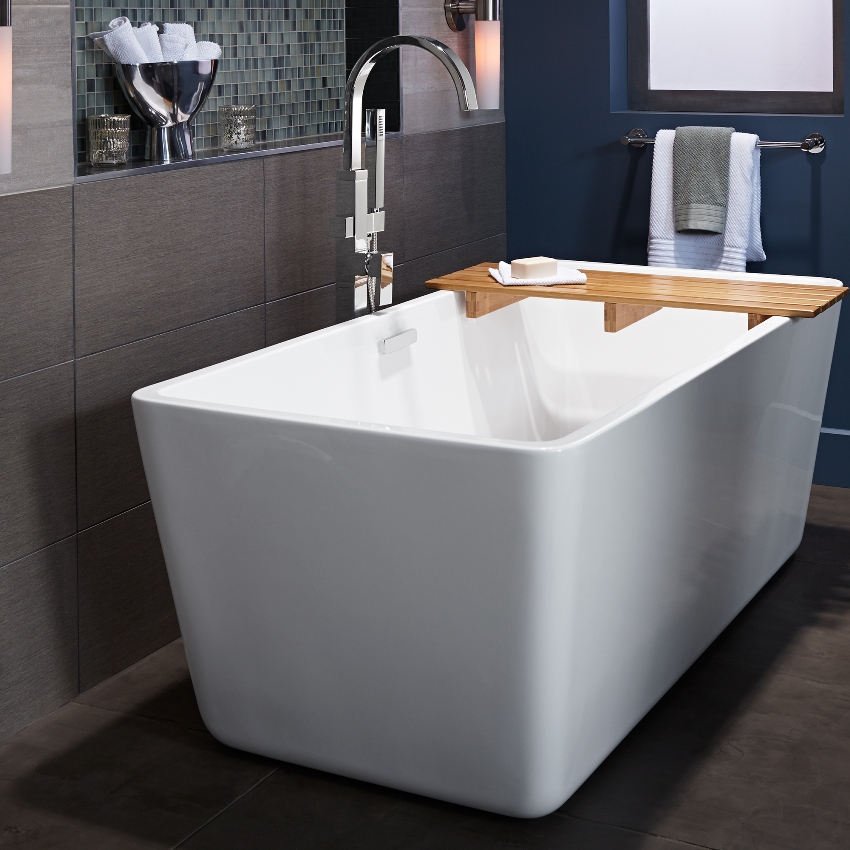
In the European market, manufacturers from different countries offer sanitary ware from economy to premium class
Cast-iron baths "Roca" are very popular among Russian buyers, because the models have an average price and high quality of workmanship. The Italian manufacturer's Roca Akira model, which is manufactured at a factory in Spain, is distinguished by good reviews. The size is 170x85x44 cm, the set includes a handle for more comfortable use. You can install the bath against the wall or decorate it in an original way inside a special podium.
The model can be supplemented with two handles, the holes for which are made on the walls of the bowl. Another advantage is the central location of the drain, which makes it easy to adjust the bathroom filling without getting up. Dimensional characteristics:
- bowl volume - 225 l;
- weight - 115 kg;
- manufacturer's warranty - 10 years;
- height - 55 cm;
- the price of a cast-iron bath is 39,500 rubles.
How is the restoration of a cast-iron bathtub carried out, what is required for this
The enamel coating, despite its resistance, can still fade or deteriorate over time. Especially the quality of water affects the rate of destruction: if it is too hard, then the coating will darken faster. Also, the bottom of the bathtub can become rough due to too frequent use of abrasive cleaning agents. In this case, it is not necessary to immediately purchase new plumbing - for a start, you should try to restore it at home.
Before starting the restoration work, you should remove the old layer of enamel, which will require a drill with a special attachment. If it is absent, you can use a metal brush. You should be prepared for the fact that this procedure will take a long time, because you need to act carefully. Before starting work, the area around the bowl must be covered with rags or newspapers.
Useful advice! If the coating of the cast-iron bath spoils the presence of lime, it can be removed with the help of acid, when using which it is better to work with gloves.
After removing the plaque, the surface of the bowl must be cleaned of dust particles and treated with a degreasing agent. Then you should fill a full bath with hot water and leave for 10-15 minutes, after which you need to drain everything and wipe the surface dry with sponges that absorb moisture well. For more thorough drying, you can use a regular hair dryer.
The final stage is the restoration of the coating. During the restoration process, you will need to apply 4 layers of enamel. Each subsequent layer is applied only after the previous one has completely dried, so that as a result, irregularities do not turn out. Only after the fourth layer is applied, the repair is considered complete. It is important to note that during the restoration process, you can choose any color of enamel, but the shelf life of the new coating will be only 2-3 years, because in terms of quality it cannot be compared with the factory application.
Due to their durability and attractive appearance, cast iron bathtubs will not lose their relevance for a long time, even despite how much they weigh. The large weight of the product is considered a problem only during installation, and then, on the contrary, it plays into the hands of the user. If you properly care for the product and monitor the integrity of the enamel coating, you will need to change the bath very soon.

